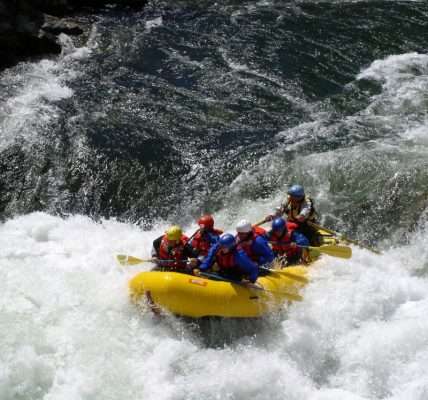Paragliding is an exhilarating sport‚ offering a unique perspective and sense of freedom. However‚ like any aerial activity‚ it’s crucial to understand the potential risks and how to mitigate them. A critical aspect of paragliding safety and skill development involves understanding and undertaking SIV training. But what does SIV stand for in paragliding? SIV stands for Simulation d’Incidents en Vol‚ which is French for “Simulation of Incidents in Flight.” This course is designed to help pilots safely experience and learn to recover from various in-flight incidents.
Understanding SIV Training
SIV training is a specialized paragliding course conducted over water‚ allowing pilots to deliberately induce and recover from different types of collapses and malfunctions. The goal is to build confidence and develop the necessary skills to react appropriately in real-life situations. This type of training significantly enhances a pilot’s ability to handle unexpected wing behavior‚ making them safer and more competent in the air.
Why is SIV Training Important?
- Improved Safety: By practicing recoveries in a controlled environment‚ pilots gain the knowledge and muscle memory to react effectively during unplanned incidents.
- Increased Confidence: Successfully recovering from simulated collapses boosts a pilot’s confidence and reduces panic in stressful situations.
- Enhanced Wing Understanding: SIV training provides a deeper understanding of how a paraglider wing behaves in different conditions and how to control it effectively.
- Reduced Risk of Accidents: By learning how to manage potentially dangerous situations‚ pilots significantly reduce their risk of accidents.
Key Elements of an SIV Course
SIV courses typically cover a range of maneuvers and incident simulations‚ including:
- Asymmetric Collapses: Simulating collapses on one side of the wing.
- Full Frontal Collapses: Simulating a collapse across the entire leading edge.
- Stalls: Learning to recognize and recover from stalls.
- Spins: Understanding and recovering from spins.
- Spiral Dives: Controlling and exiting spiral dives.
- Big Ears: Using big ears for controlled descent.
- B-Line Stalls: Using B-line stalls for controlled descent.
These maneuvers are practiced over water‚ with instructors providing guidance and feedback via radio. Pilots wear flotation devices and have backup parachutes (reserves) readily available.
FAQ About SIV Training
Is SIV training mandatory for all paragliding pilots?
No‚ SIV training is not always mandatory‚ but it is highly recommended for all pilots‚ especially those progressing to higher-performance wings or flying in more challenging conditions.
When should I take an SIV course?
It is generally recommended to take an SIV course after gaining some experience and confidence in soaring and basic flying techniques. Pilots should be comfortable with launching‚ landing‚ and basic wing control.
What equipment do I need for an SIV course?
You will typically need your paragliding wing‚ harness‚ reserve parachute‚ helmet‚ and radio. The SIV course provider will often have specific requirements regarding equipment‚ so it’s best to check with them beforehand.
How long does an SIV course last?
SIV courses typically last 2-5 days‚ depending on the level of training and the specific course curriculum.
Paragliding is an exhilarating sport‚ offering a unique perspective and sense of freedom. However‚ like any aerial activity‚ it’s crucial to understand the potential risks and how to mitigate them. A critical aspect of paragliding safety and skill development involves understanding and undertaking SIV training. But what does SIV stand for in paragliding? SIV stands for Simulation d’Incidents en Vol‚ which is French for “Simulation of Incidents in Flight.” This course is designed to help pilots safely experience and learn to recover from various in-flight incidents.
SIV training is a specialized paragliding course conducted over water‚ allowing pilots to deliberately induce and recover from different types of collapses and malfunctions. The goal is to build confidence and develop the necessary skills to react appropriately in real-life situations. This type of training significantly enhances a pilot’s ability to handle unexpected wing behavior‚ making them safer and more competent in the air.
- Improved Safety: By practicing recoveries in a controlled environment‚ pilots gain the knowledge and muscle memory to react effectively during unplanned incidents.
- Increased Confidence: Successfully recovering from simulated collapses boosts a pilot’s confidence and reduces panic in stressful situations.
- Enhanced Wing Understanding: SIV training provides a deeper understanding of how a paraglider wing behaves in different conditions and how to control it effectively.
- Reduced Risk of Accidents: By learning how to manage potentially dangerous situations‚ pilots significantly reduce their risk of accidents.
SIV courses typically cover a range of maneuvers and incident simulations‚ including:
- Asymmetric Collapses: Simulating collapses on one side of the wing.
- Full Frontal Collapses: Simulating a collapse across the entire leading edge.
- Stalls: Learning to recognize and recover from stalls.
- Spins: Understanding and recovering from spins.
- Spiral Dives: Controlling and exiting spiral dives.
- Big Ears: Using big ears for controlled descent.
- B-Line Stalls: Using B-line stalls for controlled descent.
These maneuvers are practiced over water‚ with instructors providing guidance and feedback via radio. Pilots wear flotation devices and have backup parachutes (reserves) readily available.
No‚ SIV training is not always mandatory‚ but it is highly recommended for all pilots‚ especially those progressing to higher-performance wings or flying in more challenging conditions.
It is generally recommended to take an SIV course after gaining some experience and confidence in soaring and basic flying techniques. Pilots should be comfortable with launching‚ landing‚ and basic wing control.
You will typically need your paragliding wing‚ harness‚ reserve parachute‚ helmet‚ and radio. The SIV course provider will often have specific requirements regarding equipment‚ so it’s best to check with them beforehand.
SIV courses typically last 2-5 days‚ depending on the level of training and the specific course curriculum.
Beyond the Acronym: The Zen of SIV
But SIV is more than just an acronym; it’s a doorway. It’s a portal to understanding the dance between you‚ your wing‚ and the whims of the wind. It’s about cultivating a sixth sense for the subtle shifts in pressure‚ the whispers of turbulence‚ and the silent language of your glider. Imagine it not just as a safety course‚ but as an accelerated meditation‚ a baptism by air where fear is confronted‚ dissected‚ and ultimately‚ transformed into a quiet confidence.
The Water Whispers: A Different Kind of Classroom
The choice of water as the training ground is no accident. It’s not merely a safety net‚ but a crucial element of the experience. The water whispers‚ “Let go.” It provides a forgiving embrace when gravity momentarily wins. It reflects the sky back at you‚ a constant reminder of the vastness above and the importance of humility. It forces you to commit‚ to trust your instincts‚ and to surrender to the moment. Each splashdown is a lesson‚ a reset button‚ and an opportunity to learn from perceived mistakes.
Unlocking Your Inner Wing Whisperer
True mastery of paragliding isn’t just about reacting to incidents; it’s about anticipating them. SIV training‚ at its core‚ is about developing this preternatural awareness. It’s about learning to feel the wing’s energy‚ to sense the impending collapse before it happens‚ and to proactively adjust your inputs to maintain control. Think of yourself as a conductor‚ leading an orchestra of air currents and fabric. Your hands on the brakes become your baton‚ guiding the wing through the skies with grace and precision.
So‚ the next time you hear the term SIV‚ don’t just think of “Simulation d’Incidents en Vol.” Think of it as a journey of self-discovery‚ a chance to connect with the elements‚ and a path towards becoming a truly skilled and confident paragliding pilot. It’s about unlocking your inner wing whisperer and embracing the freedom of flight with knowledge‚ respect‚ and a healthy dose of awe. And remember‚ the best pilots aren’t those who never make mistakes‚ but those who learn from every flight‚ especially those spent splashing into the water with a grin. Ultimately‚ SIV teaches you how to respect the air‚ and how to dance within it.


